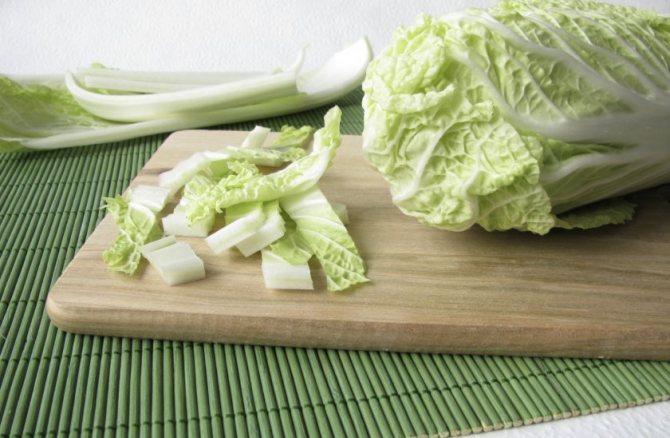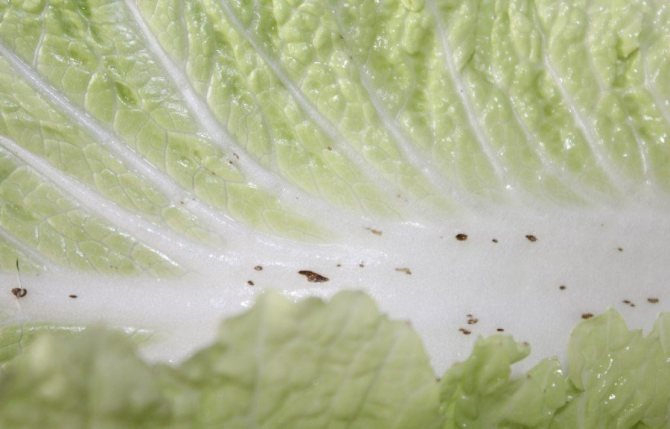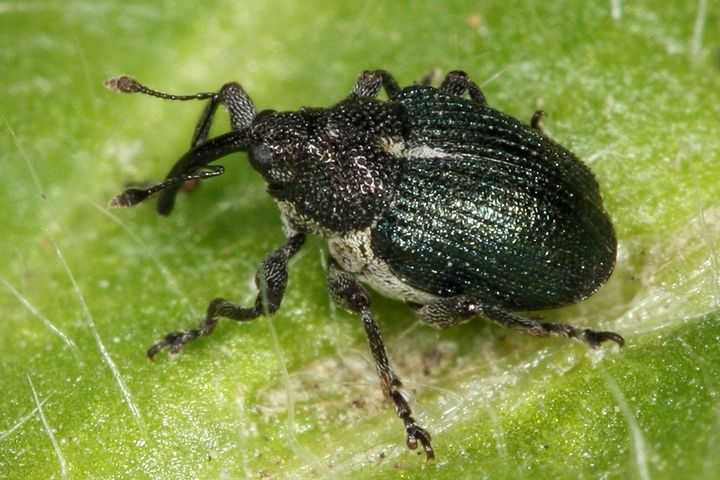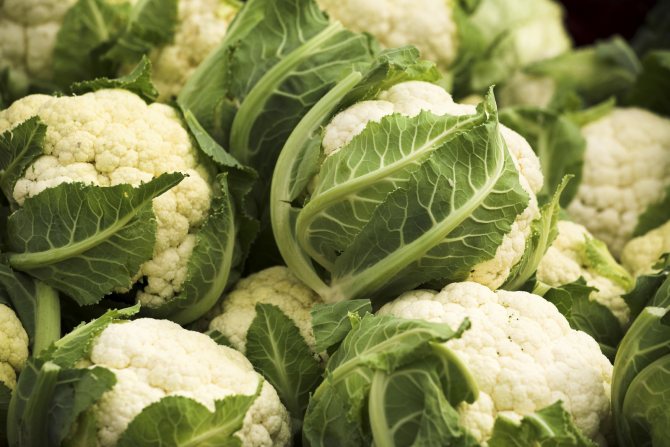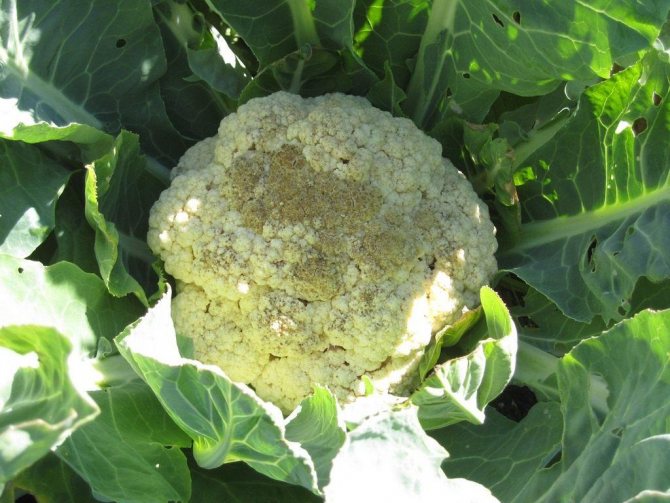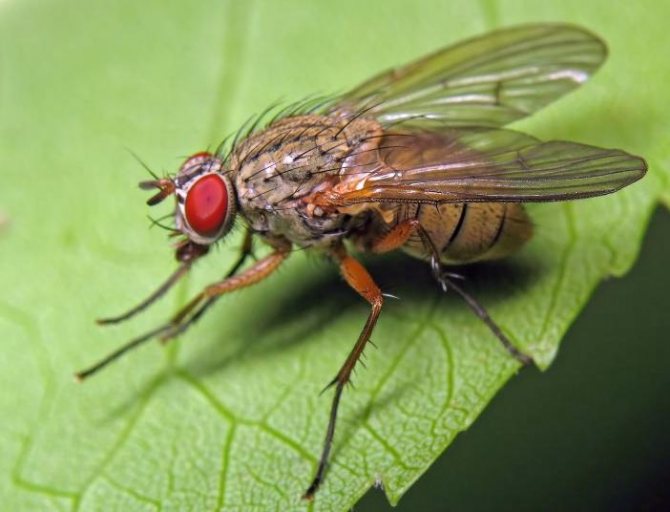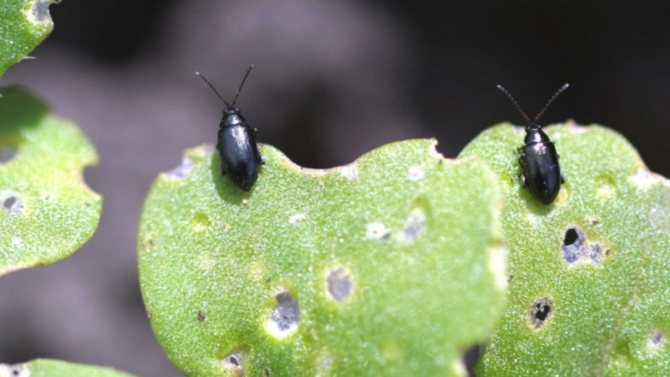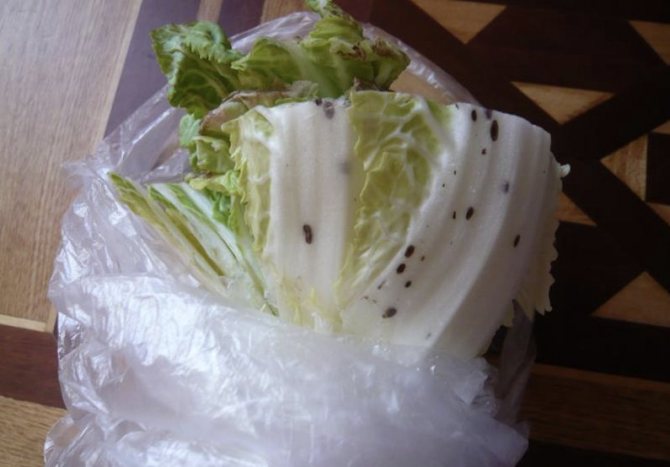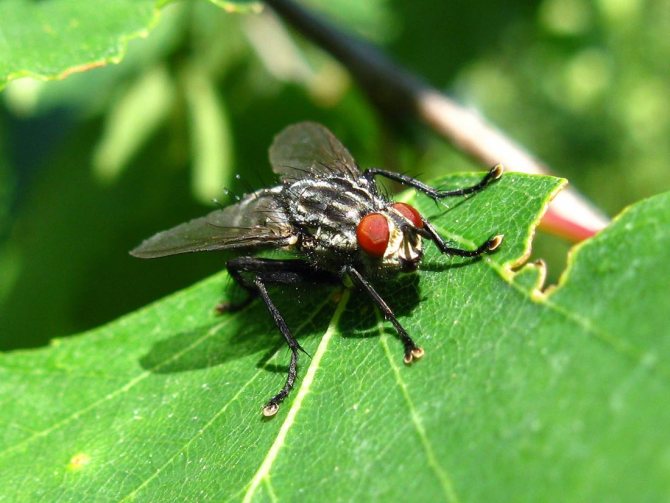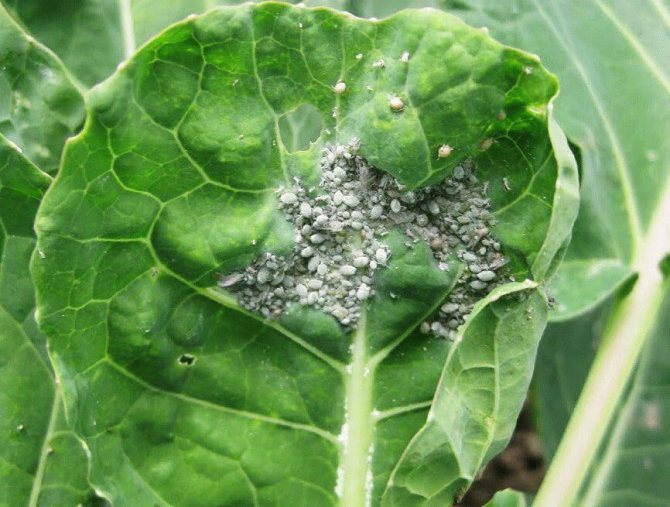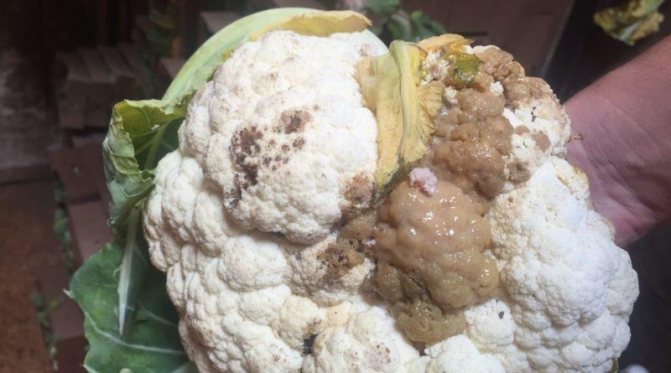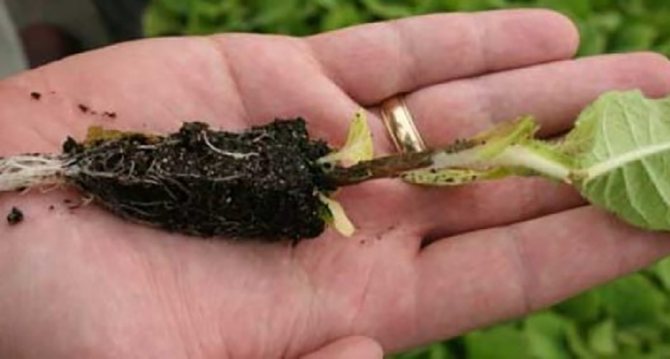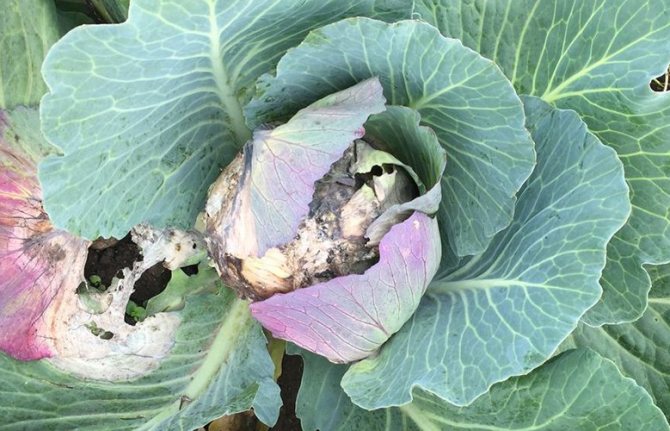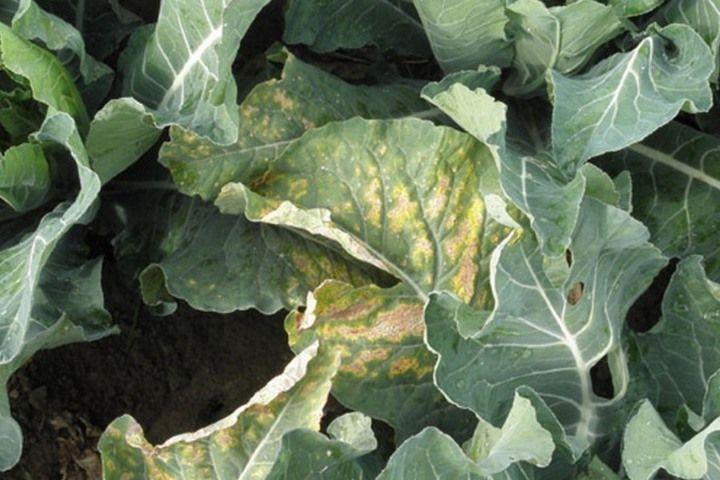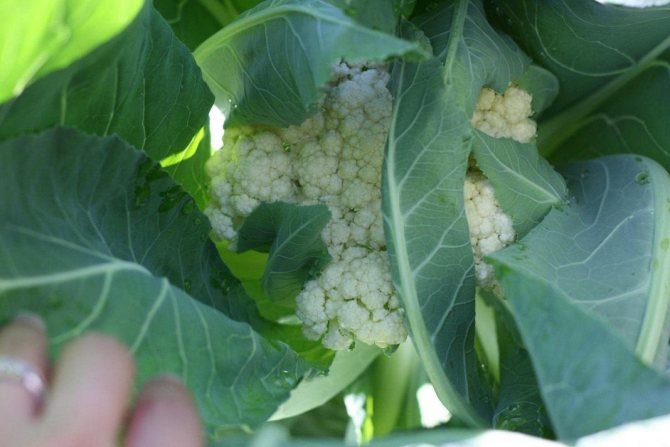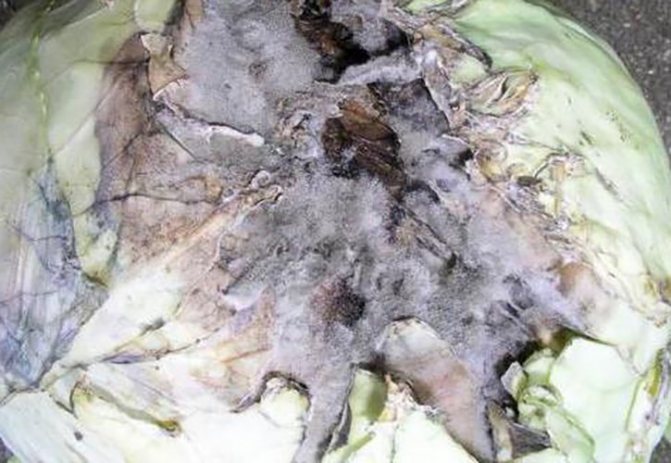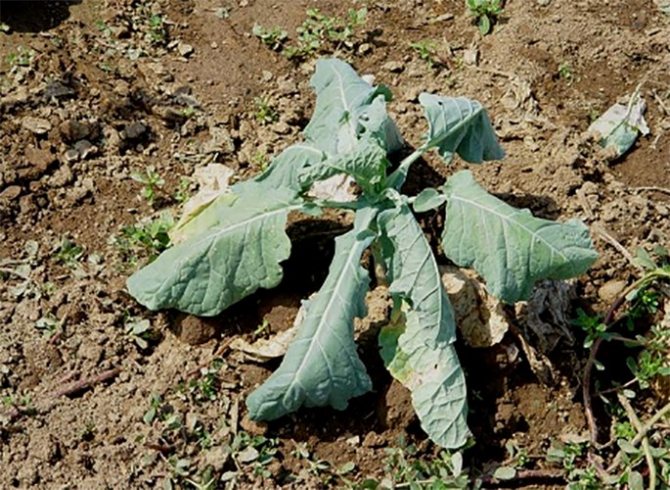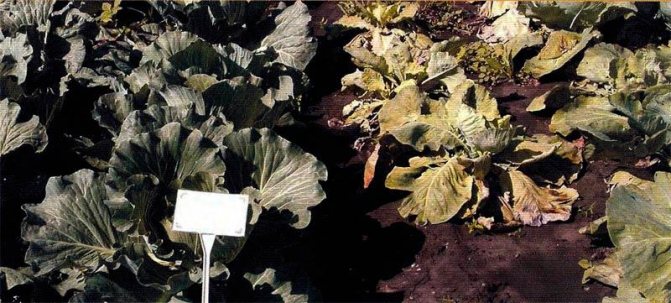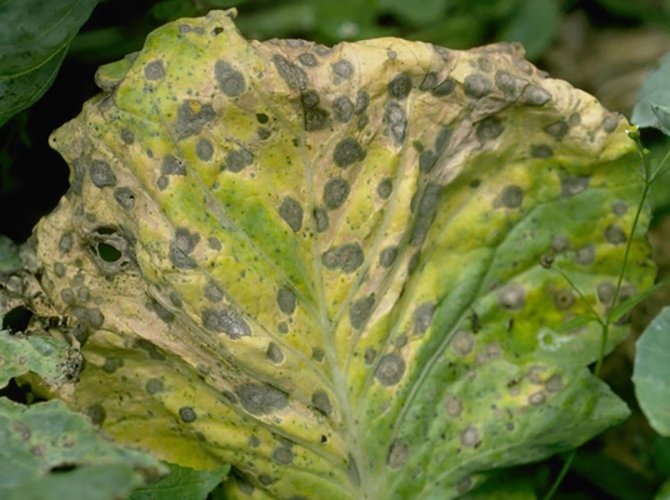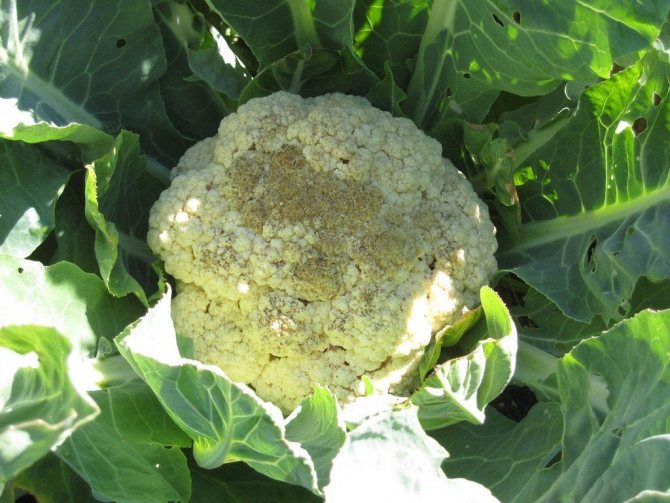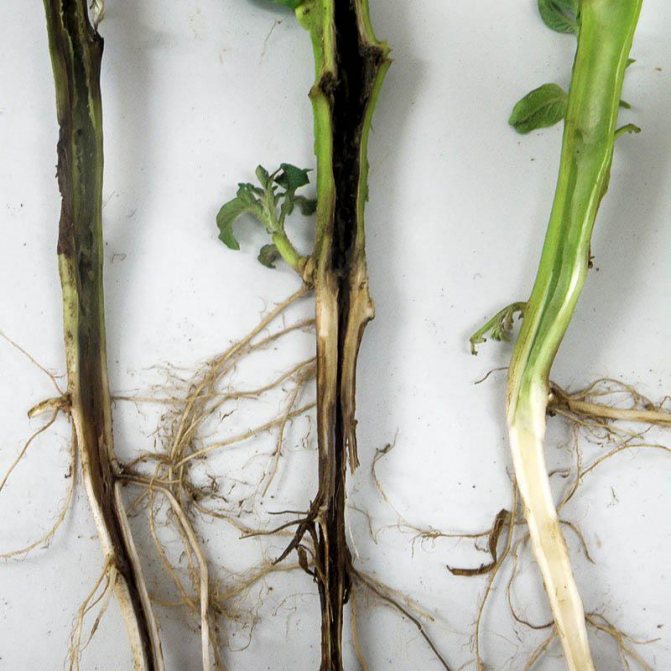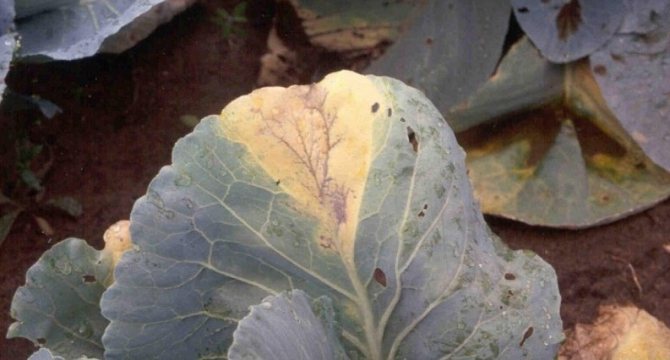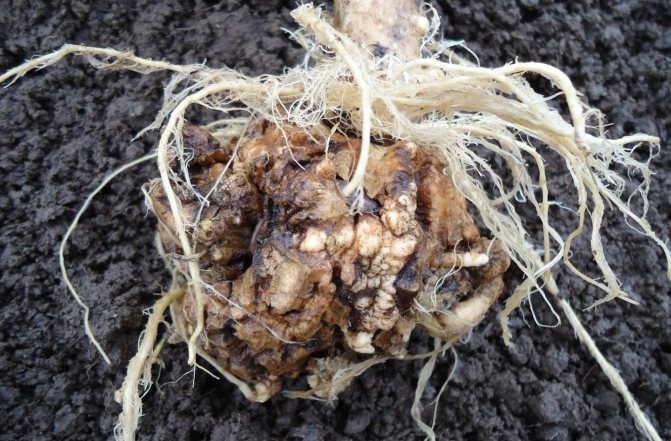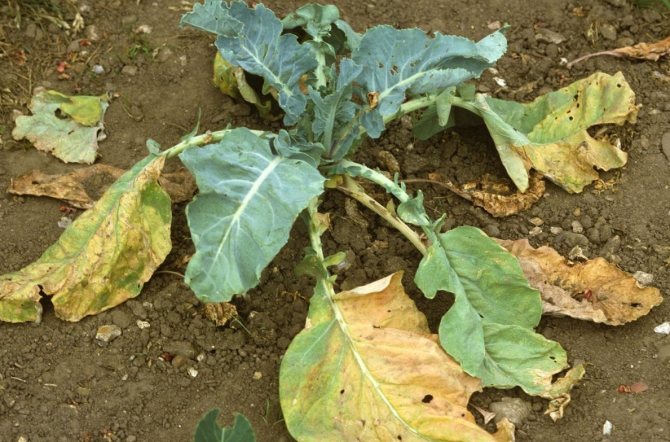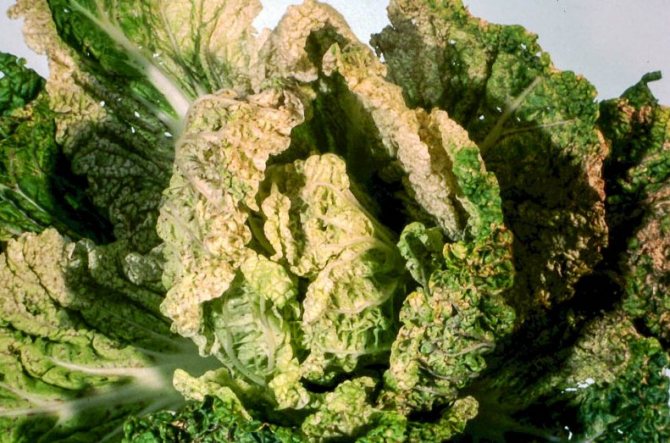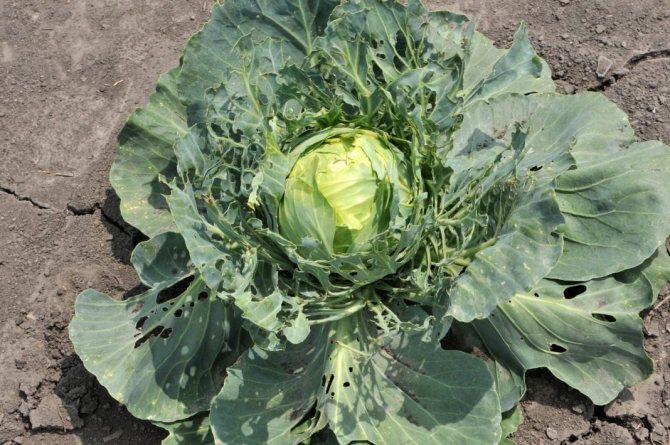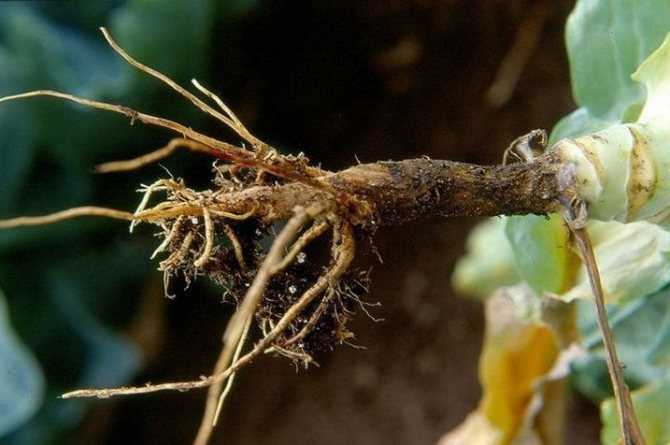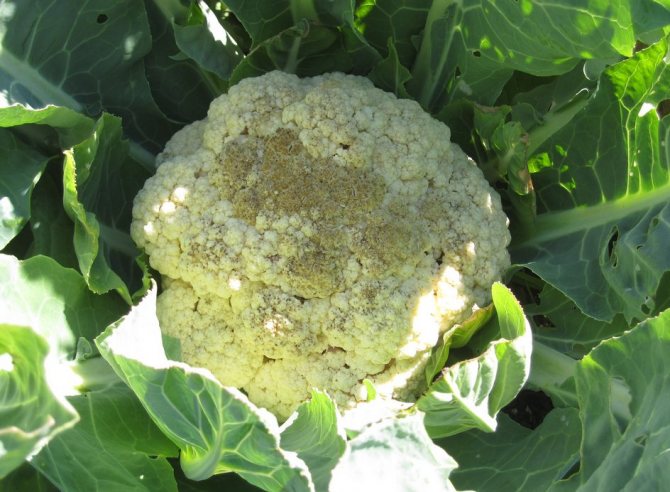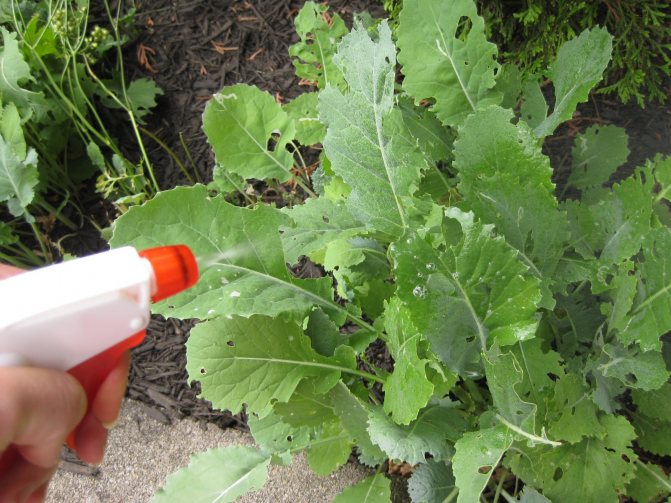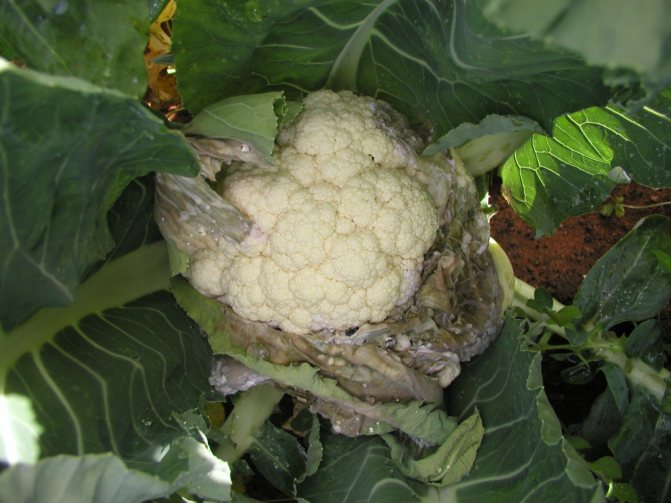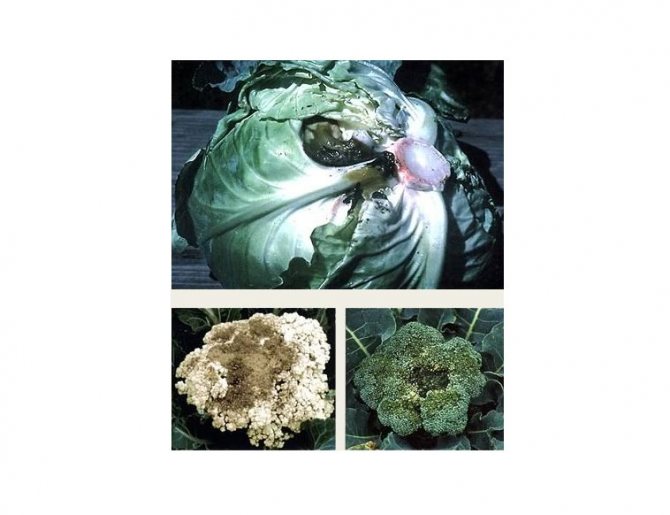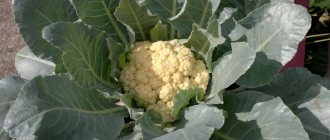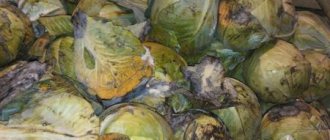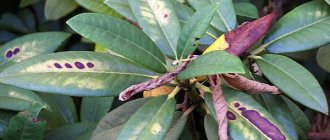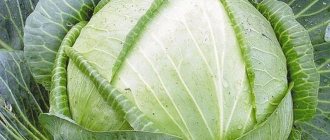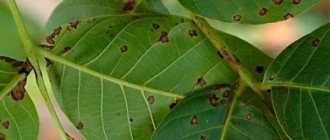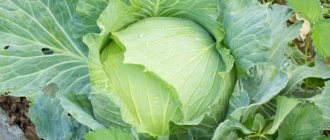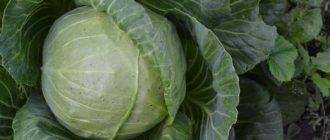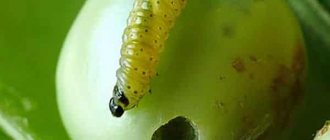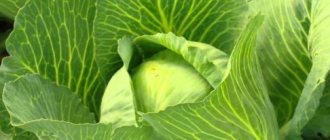Diseases of cauliflower interfere with the ripening of large, tasty fruits in the garden. They are different depending on the degree of infection and its type. Every gardener should know how to protect the cauliflower crop outdoors and in greenhouses from diseases and pests. It is necessary to know all the signs of the disease in order to properly fight them. It is best to take all preventive measures in advance in order to protect cabbage from pests and diseases, than then try to get rid of them.
What harmful insects attack
Cauliflower pests are especially damaging to the crop. They settle there, still being larvae, and suck all the juices from the vegetable.
The main insect pests:
- Aphid. Because of the larvae, the leaves of the cauliflower curl up. They eat up all the juice, stopping the growth of the heads of cabbage. Often, aphids attack in flocks.
- Flea. They gnaw the leaves of young seedlings. Because of the attack, the cabbage dies and dries up.
- Slugs. Snails and slugs are the main enemies of the vegetable. They prevent fruit from developing.
- Caterpillars. The scoop butterfly lays its eggs on the leaves. Caterpillars emerge from them, gnawing leaves, then settling in heads of cabbage.
- Bedbugs. Their saliva is harmful to greenery. They suck out the juices of the cabbage leaves, stopping the development of the fruit.
- Leaf beetles. Large holes are left on the leaves.
- Mole. Lays eggs in spring. It hides deeply, damaging the growing point of the vegetable, eats up all the juice of the plant, depriving gardeners of productivity.
- Fly. Lays eggs on stems, attacks in flocks.
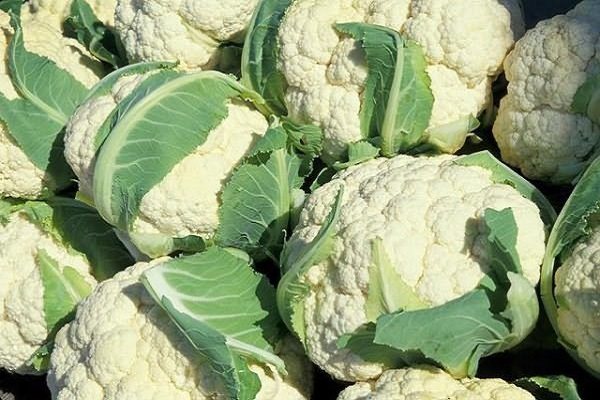
Knowing what harmful insects look like, you can prepare solutions for their destruction.
Description of pests of cauliflower and methods of dealing with them
Slugs
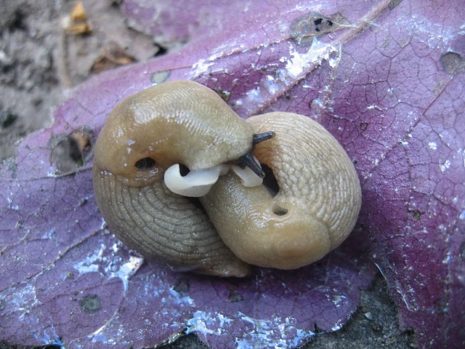

The abundance of slugs (snails without shells) is explained by their fertility and omnivorousness. Moisture-loving pests bite into cauliflower and can destroy the entire crop.
It is easy to deal with them, it is enough just to collect them on time. You can organize "baits" from pieces of wood or wet rags, under which they will be collected with the onset of the day. They also cut off the lower leaves, dig damp grooves around the plant, covered with wood ash or mustard.
You may be interested in: Favorable days for broccoli seedlings in 2020 Planting Chinese cabbage for seedlings in 2020 lunar calendar Planting cauliflower seedlings in 2020 by the moon
Cabbage aphid
Small, about 2 millimeters in size, pests are able to "suck" cauliflower due to their abundance and fertility (several generations per season). The leaves of the plant become discolored, may turn pink, curl, the heads are not fully formed.
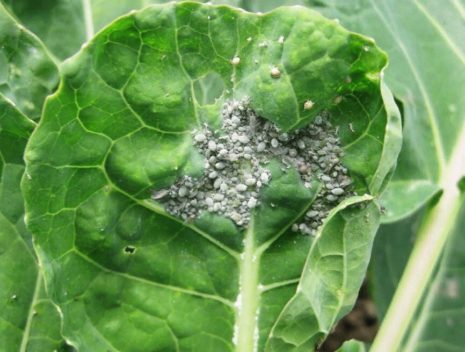

In order to prevent the larvae of the cabbage aphid from developing, the tops and cruciferous weeds are destroyed in time, and when it appears, it is recommended to treat the beds with the preparations "Decis", "Karbofos", "Aktara" or "Rovikurt". Pests are also removed by hand, with a simple rag soaked in soapy water, decoctions of garlic, tomato, tobacco.
Cruciferous fleas
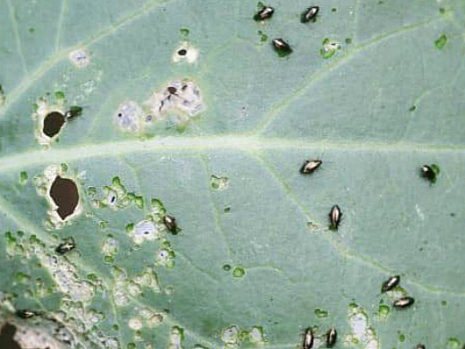

There are several types of jumping 2-3 mm beetles, with a color from yellow-bronze to blue-green and black.Harm, until complete destruction, can cause young shoots of cauliflower because of their tenderness and insecurity, and the number of pests. They are especially active in hot sunny weather.
Insects should be fought with prophylactic methods, destroying cruciferous weeds, digging up the soil for the winter and planting plants early, before cruciferous flea beetles appear (let the leaves form and grow stronger), water and shade the beds on hot days, treat with a solution twice in 10 days trichlorometaphos-3 (0.2%). If the vegetables are attacked by pests, then you can spray them with "Aklettik", "Decis", "Bankol" or "Karate".
Spring cabbage fly
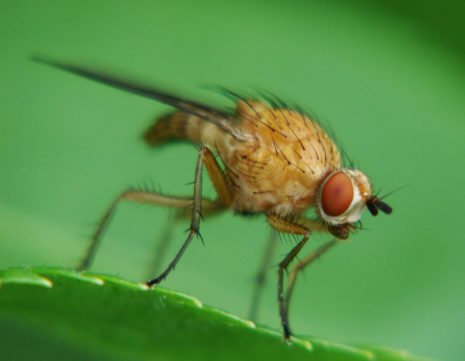

The insect is dangerous with its larvae, which it lays in the ground and on the root collar of cauliflower. Growing up, they feed on the plant, reducing the yield or completely destroying it.
As a preventive measure, it is recommended for gardeners to spill the soil around each seedling with a solution of karbofos (0.2%, repeat the procedure three times with an interval of 8-10 days), and dig up the soil in a timely manner. When it appears, treat the cabbage with chlorophos.
Caterpillars
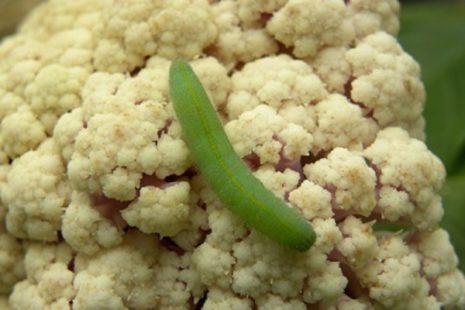

Moths and some species of butterflies (cabbage scoop, whiteworm), laying eggs on the leaves of the plant, are dangerous for cauliflower. Growing up, they turn into caterpillars, which, as they grow older, bite into the cabbage, which makes the heads of cabbage unusable.
Caterpillars are destroyed even before they appear, by detecting and crushing egg clutches. Adult specimens can be collected by hand. For pest control, entobacterin-3 (0.5%), potassium chloride (0.5%, 2-3 treatments), superphosphate (0.1%), preparations "Phosbecid", "Aktelik", "Lepidocid" are also used , "Karbofos" and others.
How to deal with insects
If larvae, eggs or insects themselves are seen, then measures must be taken to save the cabbage from pests. The fight against them should be aimed at driving out uninvited guests, and improving the foliage and fruits.
The very first treatment should be even before the appearance of pests. If you spray a healthy plant for prophylaxis with special solutions purchased in a garden store, then there is a chance to prevent them from appearing in the beds.
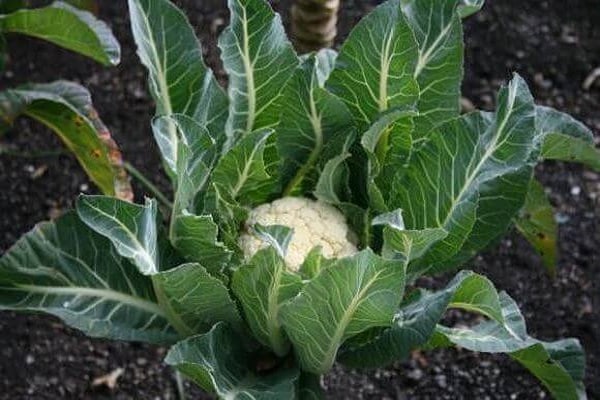

If fly eggs are found, then the cabbage is treated with thiophos. This drug is diluted in water according to the written instructions. The mole is destroyed with chlorophos, calcium arsenate, or anabasine sulfate solution. Aphids are also destroyed by the same means.
Slugs and caterpillars are collected by hand, then incinerated. Then the foliage is treated with Bazudin, Aktellik or Diazinon.
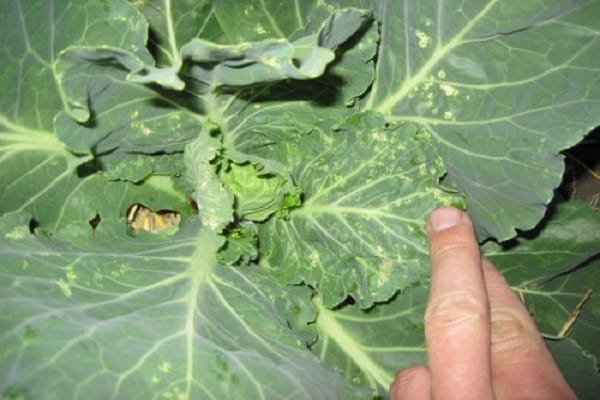

Flea beetles, bugs and leaf beetles do not withstand strong chemical solutions of Actellik and Bankol.
Methods of getting rid of pests with folk remedies are known. They are passed down from generation to generation. For example, tobacco leaves are boiled for several hours, filtered, diluted with soap and sprinkled on greens. You can also sprinkle with mothballs and sand, or sprinkle with slaked lime, ash is also good.
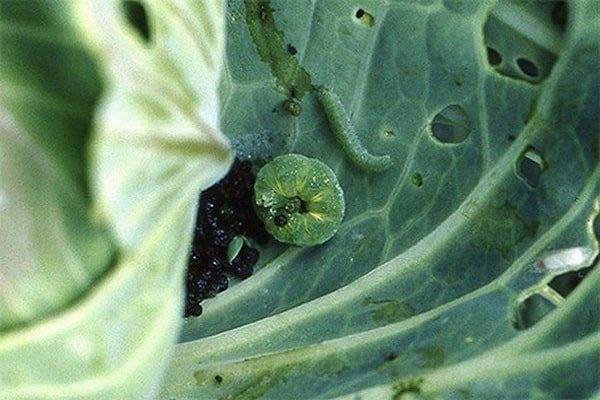

Mucous bacteriosis
A very common bacterial disease that most often manifests itself on weakened, vascular bacteriosis or insect-damaged plants. The disease affects cabbage, as a rule, during the period of inflorescence formation. Rot with an unpleasant odor appears at the base of the outer leaves, the leaves become licky. Rot gradually spreads inside the stump and head.
The most characteristic and widespread form of mucous bacteriosis is black head rot.
On the leaves it appears in the form of small dark spots, on the stems - oblong black spots. At first, watery, later dark spots appear on the heads, which, with high air humidity, can cover the entire head in a few days.Its fabric becomes black, soft, gives off an unpleasant odor.
Plants usually become infected in the field.
During the growing season, bacteria from diseased plants to healthy ones transfer pests (cabbage fly, stem lurker). The causative agent of the disease remains in the soil on plant debris. Not transmitted by seeds. The development of bacteriosis is facilitated by warm (20-25 ° C) and rainy weather, relative humidity 80-90%.
Fungal diseases
A common cause of infection with fungal diseases is the appearance of a fungus due to too high humidity, or acidity of the soil. These include the following diseases.
See also
How to deal with aphids on cabbage using folk methods, than to process at homeRead
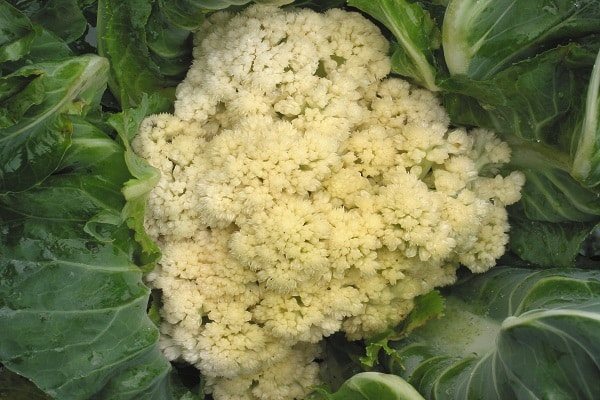

- Blackleg. The stems of the affected plant dry out and the roots become thinner. The entire root system turns black.
- Fusarium. Cabbage leaves turn red and are often orange in color. They dry up, can curl up, become wilted.
- Keela. The fungus attacks the root. The plant becomes dead, growth stops. Brown growths appear on the roots, which interfere with normal nutrition and development.
- Mosaic. The foliage is covered with spots, they have dark outlines, and must be removed. They dry quickly, so it is no longer possible to eat them.
- Gray rot. Dark spots and rot appear on cabbage.
- White rot. Mucous discharge appears on the vegetable, the leaves turn yellow. Sick heads of cabbage are best thrown away or burned immediately.
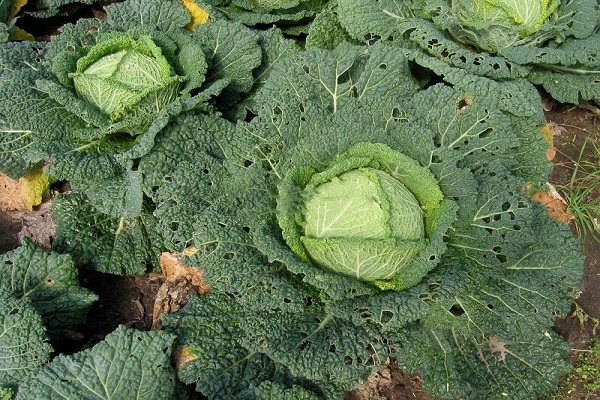

It is necessary to take care of the culture in advance so that you do not have to throw away all the fruits. As soon as suspicious leaves or stems are noticed, it is immediately necessary to buy medicines for unwanted diseases. If it is reliably protected, then there will be a wonderful harvest.
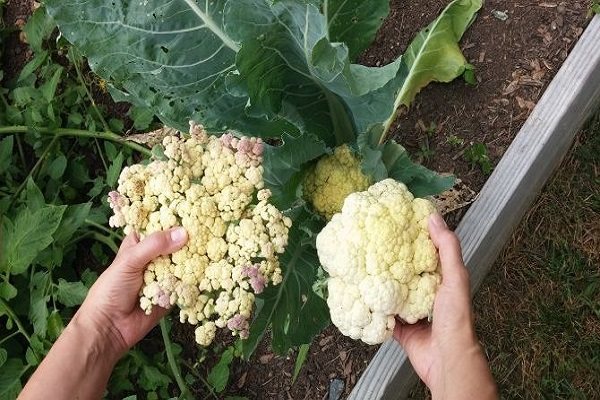

How does the appearance of a diseased plant differ from that of a pest?
Pests always leave traces of their activities:
- gnawed leaves;
- moves;
- sticky pad;
- excrement.
If such traces cannot be found, then the disease should be suspected. Growth retardation, wilting, the appearance of white, dark, black or brown spots on the leaves - all this, with careful study, will help to make a diagnosis and start treatment.
Attention!
When treating plants, all drugs should be used only in accordance with the manufacturer's instructions attached to them. It is strictly forbidden to use expired, unmarked or not having instructions!
Bacterial diseases
Knowing what bacterial and viral diseases exist, you can save cauliflower from them.
Quite often, cabbage can get sick with vascular bacteriosis. Infected cabbage has purple leaves and yellowness towards the middle of the leaf. It begins to curl, the mesh on it becomes dark lilac. If the infection occurs at the beginning of ripening, then it does not allow the fruit to form. They dry before our eyes. Such a plant is very fragile, it dries quickly and withers. This infection is mainly caused by insects. That is why the fight against them and against diseases at the same time is necessary for high-quality crop cultivation.
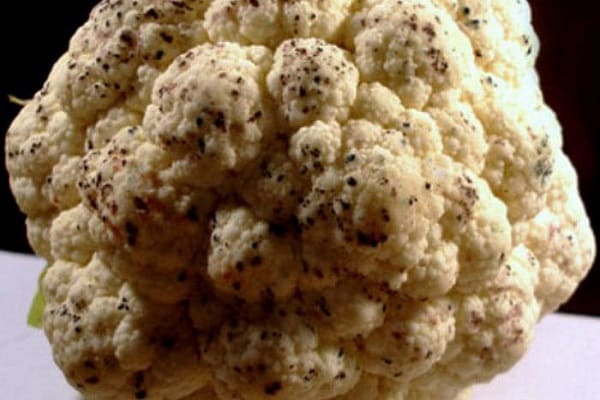

If the cabbage turns purple, a slimy rot with an unpleasant odor has appeared on it, and wet mucus on the foliage, then this is a slimy bacteriosis. The disease occurs during the flowering period. First, the leaf is affected, it curls, darkens, becomes covered with rotten traces. Then the disease gradually passes to the root and head of cabbage. It’s all wet and smells bad. Such a vegetable cannot be eaten, so it is immediately thrown away and measures are taken to destroy the remnants of the infection, that is, they treat the soil. It is necessary to monitor for pests: flies, aphids. Since they can also participate in the transmission of the virus. Alirin and Gamair are the best remedies for this disease.You can also spray with copper sulfate for prevention.
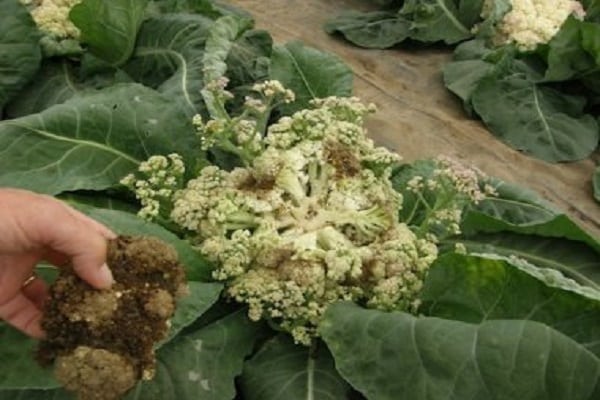

To eat or not to eat - that is the question
Eating infected Chinese cabbage leaves is not recommended. They will not bring benefit to the human digestive system. Those gardeners who feel sorry for the effort spent can wash cabbage from their garden well, cut out dark spots and then use it for food. The taste of the vegetable is not lost. It is not worth buying such a head of cabbage with black "marks".
Leaves with holes are also best avoided. It happens that the black dots of Alternaria in the center turn yellow-brown and fall out, forming holes. In this case, "lumbago" on the leaves of Peking cabbage may also indicate a disease.
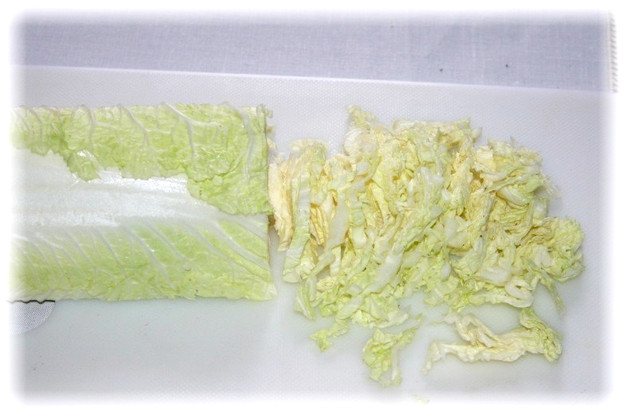

How to distinguish lesions on cabbage
Knowing why the cauliflower isn't growing the right size is important. The leaves of cabbage curl, they turn yellow.
If the cauliflower turns pink, it may be from too strong sunlight, or from a fungal infection on it. It is worth noting this in time to begin the fight against the disease.
See also
What to do if ants eat cabbage, how to get rid of themRead
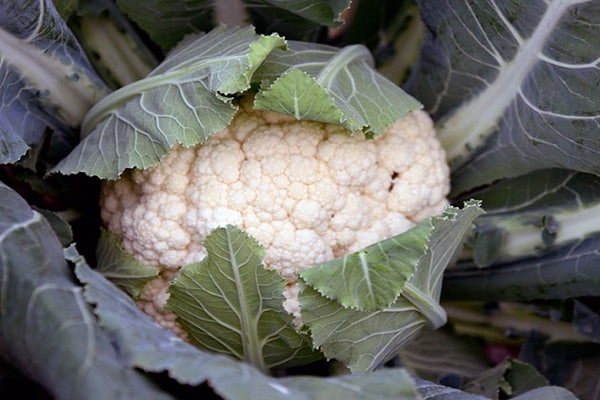

If an aphid, leaf beetle, bug or slug sits on a vegetable, then the leaf immediately withers, becomes dry and not juicy. This is due to the fact that insects eat all the juice from the plant, and it can no longer grow normally. If the leaves are folded, then this is definitely a sign of the appearance of pests.
Indeed, with fungal and bacterial diseases, spots mainly appear, the color and smell of the foliage change.
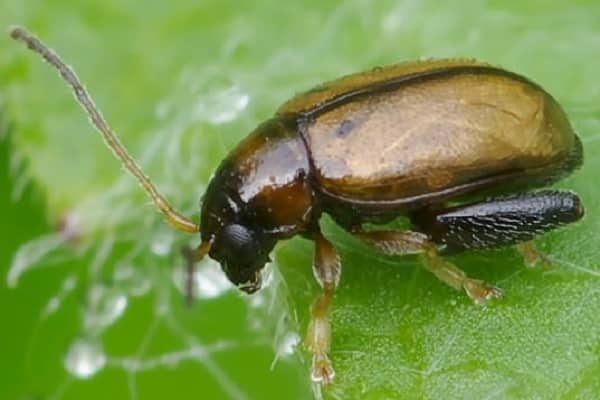

Reasons for the appearance of black dots
The appearance of black dots on Peking cabbage is a sign of a physiological disorder or disease.
Pests and other diseases can "settle" on the affected areas. Therefore, the initially light gray dots gradually turn into brown and black.
Pinpoint necrosis
Black spots of punctate necrosis usually appear on the outer leaves of the "Peking plant", although they can reach the inner ones. Sizes from half a millimeter to four. The shape of black spots is round or elongated, necessarily depressed. Attentive gardeners will see the disease even during cultivation. It happens that black dots on cabbage leaves appear during storage. Then the degree of crop damage can exceed 40%.
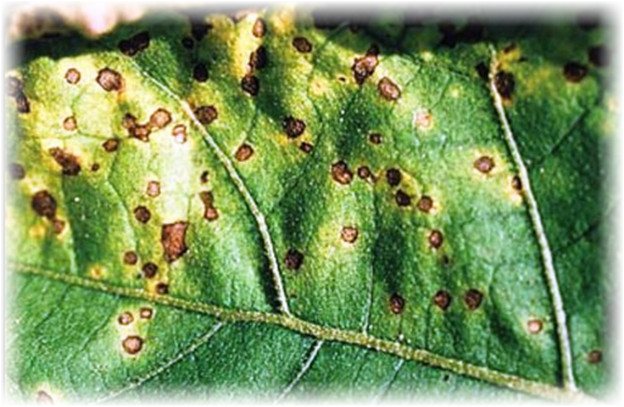

Punct necrosis is a physiological disorder of a plant and is also called a functional noncommunicable disease. In simple terms - a disturbed metabolism in a vegetable. It manifests itself on mature heads of cabbage, green leaves rarely get sick. The reason is soil alkalization when too much nitrogen and phosphorus is introduced into the soil.
Alternaria
The cause of the appearance of black dots on cabbage leaves may be a fungal disease - Alternaria. It is especially "rampant" in the high-humid climate of the sea coast and the Krasnodar Territory.
Fungi "bloom" magnificently in warm, almost hot, rainy weather. May appear at the seedling stage as black stripes or spots on the cotyledons and hypocotyledonous knees. On adult plants, they appear as black dots. With the intensification of the disease, a plaque similar to soot occurs - conidia. Cabbage pests gather to them, wishing to "feast on" a weakened plant. Leaves die right in the garden.
Cabbage is infected from plant debris and seeds. Harvested weeds can serve as an "incubator" for infection. Conidia are carried by water or air. Pests make their "contribution" to the spread. In a favorable place for themselves, fungal spores calmly survive the winter.
What to do if cabbage is often sick
By the way a given crop yields a harvest from year to year, you can determine whether cabbage often gets sick.What to do if you can't get a decent harvest, the lower leaves constantly wither, the head of cabbage turns yellow, caterpillars and flies attack.
Experienced summer residents are constantly fighting for their harvest, avoiding mistakes in cultivation. Cauliflower should not be planted where infected plants have been for the next five years. Deep processing of the soil, burning, and rest of the earth is necessary.
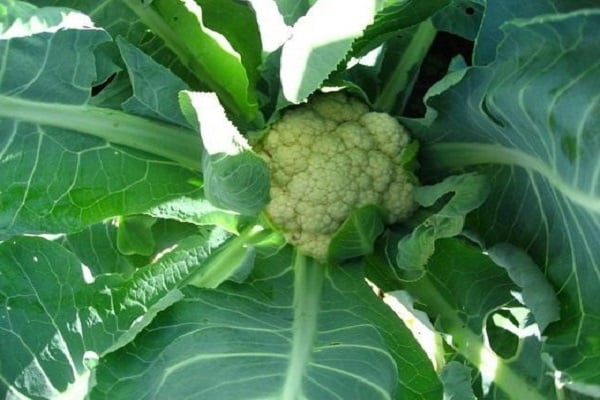

If cabbage leaves turn yellow quite often, then this is a sign that either there is not enough vitamins, or it is suffering from some kind of fungal disease. Carry out measures to clarify the problem, and fix it by visiting a specialized store.
Jaundice
Fusarium wilting, or jaundice. This disease affects both seedlings and cauliflower seedlings planted in open ground. The fungus, the causative agent of the disease, penetrates into the vascular system of plants and spreads into the stem, preventing the movement of nutrients and moisture. The infection persists in the soil for many years and is especially dangerous when cabbage is grown for a long time in the same area.
The leaves of the affected plants acquire a yellow-green color, often on one side, but sometimes yellowness covers both sides.
On yellowed leaves, a small dark speck appears, a noticeably weak darkening of the veins is noticeable.
On the cross section of the stem and leaf petioles, even with a weak development of the disease, a light brown ring of blood vessels can be seen. Sick leaves fall off, the head becomes ugly.
Prevention measures that gardeners should take
In order to prevent the death of cauliflower, all gardeners need to take note of preventive measures. They should always know how to treat or spray a given crop.
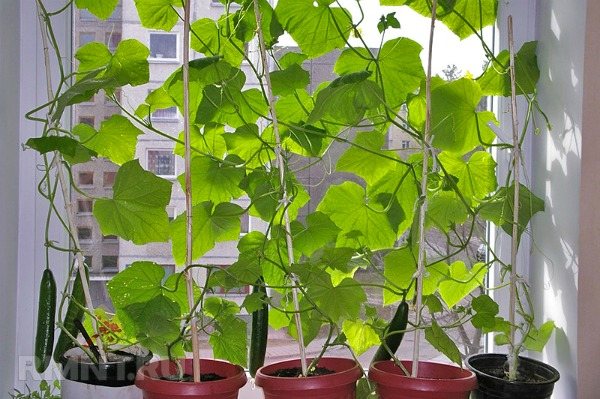

It is necessary to plant in the garden those varieties that are least susceptible to various diseases, have persistent immunity. Such varieties will not be afraid of aphids, slugs, caterpillars. In order to prevent the spread of aphids, caterpillars, fungal diseases, you need to know from what to spray this or that remedy. The peculiarity of white cauliflower is that its infections are transmitted not by seeds, but through harmful insects and soil.
That is why careful cultivation of the land is so important. It is necessary to loosen it more often, remove weeds, monitor the types of larvae in the ground that are unnecessary to burn. Do not forget to inspect the foliage of the cauliflower as often as possible. The onset of the disease is always easier to prevent than to throw away the spoiled fruit later.
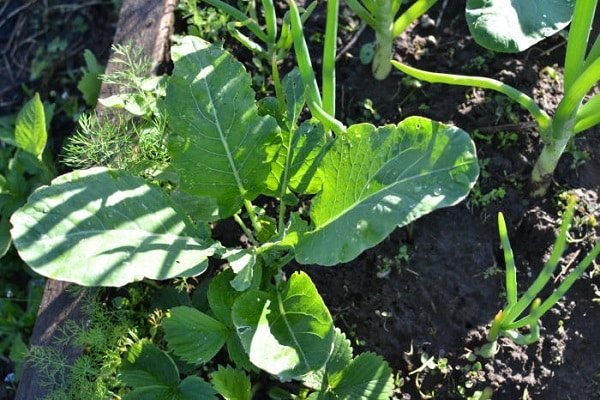

Every gardener should know about diseases and pests of cauliflower. If the plants are properly processed, then the cabbage becomes protected from environmental influences. And then an excellent harvest and wonderful delicious dishes from this vegetable are guaranteed.
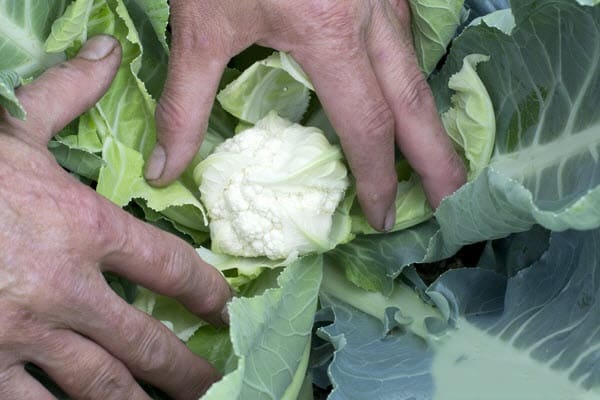

Aphid
Aphids are small insects that colonize the underside of Chinese cabbage leaves and feed on their juices. As a result, the plant loses its strength, stops growing and deforms, acquiring a domed shape. Aphids also inhabit young shoots, flowers, ovaries and stems.
To prevent the attacks of this pest on the "Peking", you can carefully remove after harvesting the weeds and stumps remaining in the field. The soil should be dug deeply, and cultivation should be carried out before planting again. Between the rows of Peking cabbage, you can plant carrot seed plants, dill and other umbrella crops - insects live on these plants, which are natural enemies of aphids (ladybugs, hover flies, aphidius wasps).
Lack of mineral nutrients and excess sun
In addition to pests and diseases, cauliflower does not like direct sunlight, from which the heads begin to turn yellow and pink, and over time they can turn brown. They lose their firmness and taste. Therefore, it is recommended to shade the heads from the direct sun when they form the size of a walnut.
Cauliflower can die or produce poor quality and poor yields due to lack of nutrient minerals.
Description of fruit and vegetable culture
Peking cabbage is a vegetable from the Cabbage family, one of the subspecies of turnip. The culture is also called Chinese cabbage or salad greens, Chinese salad or petsai. In cultivated form, it is grown as an annual plant.
The vegetable has the shape of a rosette in the form of a loose head of cabbage. The shape of the vegetable is cylindrical. Cabbage foxes are wavy, loose, with jagged or wavy edges. The color of the product is most often light green. There are also yellow and bright green specimens. The product contains vitamins A, C, B1, B2, B6, PP, irreplaceable for the human body. Also, the leaves contain up to 3.5% protein.
